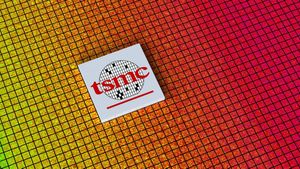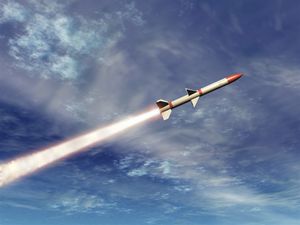Developing technology to power space-based data centers and solar farms, disaster-stricken areas, remote locations and more
News Highlights:
- NTT and Mitsubishi Heavy Industries achieve a world-record optical wireless power transmission under atmospheric interference at an efficiency rate of 15%.
- Results advance development of technologies to expand power supply and communications coverage to isolated areas and areas affected by natural disasters.
- Technology also supports NTT’s development of space-based information and communications services, including the creation of space-based data centers.
NTT, Inc. (NTT), in collaboration with Mitsubishi Heavy Industries Group (MHI), successfully demonstrated the world’s most efficient optical wireless power transmission under atmospheric interference, receiving 152 W of electric power over 1 km for an efficiency rate of 15%. The result advances the companies’ development of technologies to accurately deliver power over long distances where cables cannot be installed or used, such as in disaster-stricken areas or for space-based power systems.
This press release features multimedia. View the full release here: https://www.businesswire.com/news/home/20250917472414/en/

Figure 1: Use cases for energy transmission technology designed by NTT and MHI
The research was published in August in the scientific journal Electronics Letters, entitled “Demonstration of 15% Efficient Optical Wireless Power Transmission Over 1 km With Atmospheric Turbulence.”
Wireless Power Transmission: Microwaves vs. Laser Beams
Two primary methods of wireless power transmission exist today, with most common practical deployments utilizing microwaves. However, transmission technologies using microwaves face limitations in range, cost, efficiency and efficacy when transmission occurs in real-world conditions under atmospheric interference like heat and wind.
Due to their strong directionality, optical transmission technologies that use laser beams present a solution to this problem. However, the practical application of these optics-based technologies is limited due to the inefficiency of converting laser beams to electric power (via photoelectric conversion) over long distances, a problem compounded by atmospheric interference. Improving photoelectric conversion efficiency requires improving the intensity distribution of the laser beam during long-distance propagation.
Achieving a Wireless Optical Power Transmission World Record
To achieve this improved uniformity of beam intensity, NTT utilized beam-shaping technology that combined an axicon lens and a concave lens, resulting in a flatter laser beam. The flatter laser beam was then propagated through an atmospheric interference-diffusing beam homogenizer and directed at a light-receiving panel, which was augmented with bypass capacitors to further suppress fluctuations in output current caused by atmospheric interference. NTT designed and implemented the experiment’s transmission optics (e.g., beam shaping technologies) while MHI designed and implemented the experiment’s photodetector optics (e.g., photodetector panels, homogenizers and capacitors).
In January and February 2025, NTT and MHI scientists conducted an optical wireless power transmission experiment on the runway at the Nanki-Shirahama Airport in Shirahama Town, Nishimuro District, Wakayama Prefecture. A transmission booth equipped with an optical system for emitting laser beams was installed at one end of the runway, and a reception booth containing a light-receiving panel was placed 1 kilometer away.
During transmission, the optical axis of the laser was set at a low height of approximately 1 m above the ground and aligned horizontally. As a result, the beam was strongly affected by ground heating and wind, and the experiment was conducted under conditions with particularly strong atmospheric turbulence.
The experiment resulted in an average electrical power extraction from the receiving panel of 152 W, corresponding to a wireless power transmission efficiency of 15% (defined as the ratio of received power to transmitted power). Furthermore, continuous power delivery was successfully maintained for 30 minutes, confirming the feasibility of long-duration power transmission using this technology.
This result marks the world’s highest optical wireless power transmission efficiency ever demonstrated using a silicon-based photoelectric conversion element under conditions of strong atmospheric interference.
Further Research and Applications
Looking ahead, researchers plan to further improve power supply efficiency with improved material compatibility and the use of laser light sources with higher power—both of which will help, in unison, provide greater amounts of energy required by the high processing of advanced technologies of today and of the future.
This technology has important implications for the realization of next-generation, flexible energy delivery—with ride-ranging use cases (Figure 1). For example, providing electricity more efficiently to remote areas or disaster-stricken regions experiencing power outages. Additionally, this technology’s accuracy will one day enable the wireless charging of moving platforms, such as drones.
Finally, this technology advances the work of the NTT Constellation 89 Project (NTT C89), a collective of NTT companies dedicated to the expansion and market development of the space business field. NTT C89 has three primary technological focus areas, including the development of geostationary satellites, observation LEO satellites and High-Altitude Platform Stations, unmanned aerial vehicles that enable high-speed, high-capacity, low-latency direct communications from the stratosphere.
This long-distance wireless power technology will be used to provide power to space data centers and lunar rovers, as well as facilitate optical data relay from satellites to more efficiently obtain incredibly accurate information on Earth. Developers will also explore application to space photovoltaic power generation, which uses lasers to transmit power from geostationary satellites to the ground.
For more information about NTT C89, please visit: https://group.ntt/en/aerospace
This long-range wireless power technology will also be showcased during NTT R&D Forum 2025: IOWN Quantum Leap in Tokyo beginning Nov. 19, 2025. For more information about the NTT R&D Forum please visit: https://www.rd.ntt/e/forum/2025
About NTT
NTT contributes to a sustainable society through the power of innovation. We are a leading global technology company providing services to consumers and businesses as a mobile operator, infrastructure, networks, applications, and consulting provider. Our offerings include digital business consulting, managed application services, workplace and cloud solutions, data center and edge computing, all supported by our deep global industry expertise. We are over $90B in revenue and 340,000 employees, with $3B in annual R&D investments. Our operations span across 80+ countries and regions, allowing us to serve clients in over 190 of them. We serve over 75% of Fortune Global 100 companies, thousands of other enterprise and government clients and millions of consumers.
About MHI Group
Mitsubishi Heavy Industries (MHI) Group is one of the world’s leading industrial groups, spanning energy, smart infrastructure, industrial machinery, aerospace and defense. MHI Group combines cutting-edge technology with deep experience to deliver innovative, integrated solutions that help to realize a carbon neutral world, improve the quality of life and ensure a safer world. For more information, please visit www.mhi.com or follow our insights and stories on spectra.mhi.com
View source version on businesswire.com: https://www.businesswire.com/news/home/20250917472414/en/
The result advances the companies’ development of technologies to accurately deliver power over long distances where cables cannot be installed or used, such as in disaster-stricken areas or for space-based power systems.
Contacts
Media Contact:
Nick Gibiser
Wireside Communications®
For NTT
+1-804-500-6660
ngibiser@wireside.com







